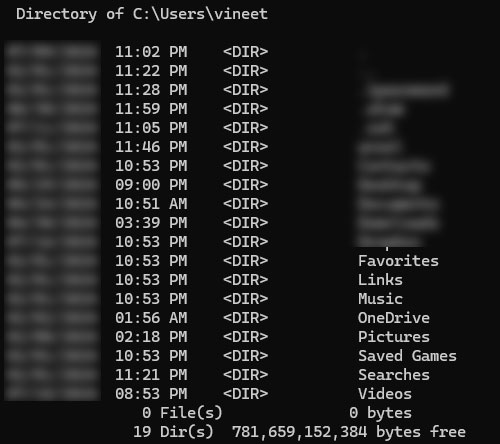
When managing files on your Windows system, you may need a comprehensive list of all files in a particular directory. Whether for inventory purposes, data management, or personal organization, generating a file listing can be a handy task. In this blog post, we’ll explore how to create a file listing of a directory using a simple script in Windows and how to add this script to the Windows right-click context menu for convenience.
Why Generate a File Listing?
Generating a file listing of a directory can be beneficial for several reasons:
- Inventory Management: Keeping track of all files in a directory.
- Data Backup: Creating a record of files before performing backups.
- Organization: Helping you organize and manage your files more efficiently.
- Reporting: Providing reports for audits or reviews.
Tools Required
We will use a built-in Windows tool, the Command Prompt (cmd), for this task. No additional software is required.
Step-by-Step Guide
1. Open Command Prompt
First, open the Command Prompt. You can do this by searching for “cmd” in the Start menu and selecting the Command Prompt application.
2. Navigate to the Directory
Use the cd (change directory) command to navigate to the directory you want to list. For example, if you want to list the files in C:\Users\YourUsername\Documents, you would enter:
cd C:\Users\YourUsername\Documents3. Generate the File Listing
Use the dir command to generate a listing of all files in the directory. You can use the operator to redirect the output to save this listing to a text file. For example:
dir > file_listing.txtThis command will create a file named file_listing.txt in the same directory, containing a list of all files and folders.
4. Customizing the Output
The dir command has several options for customizing the output. Here are a few useful ones:
/b: Uses bare format (no heading information or summary)./s: Lists every occurrence of the specified file name within the specified directory and all subdirectories./a: Displays files with specified attributes.
For example, to create a bare format listing of all files in the directory and its subdirectories, use:
dir /b /s > file_listing.txt5. Viewing the File Listing
Once you have generated the file listing, you can open file_listing.txt it with any text editor, such as Notepad. Double-click the file, and it will open in the default text editor.
Example Script
To automate this process, you can create a batch script. Open a new Notepad file and enter the following script:
@echo off
cd %1
dir /b /s > file_listing.txt
echo File listing generated successfully!
pauseSave the file with a .bat extension, for example, generate_file_listing.bat. This script will take a directory as an argument, navigate to it, generate the file listing, and notify you when it is complete.
Adding the Script to the Right-Click Context Menu
To make generating a file listing even more convenient, you can add the script to the Windows right-click context menu. Follow these steps:
1. Open Registry Editor
Press Win + R, type regedit , Press Enter to open the Registry Editor.
2. Navigate to the Context Menu Key
Navigate to the following key:
HKEY_CLASSES_ROOT\Directory\shell3. Create a New Key
Right-click on the shell key, select New -> Key, and name it GenerateFileListing.
4. Set the Default Value
Click on the new GenerateFileListing key, and in the right pane, double-click the (Default) value. Set the value to Generate File Listing.
5. Create the Command Key
Right-click on the GenerateFileListing key, select New -> Key, and name it command.
6. Set the Command
Click on the new command key, and in the right pane, double-click the (Default) value. Set the value to the path of your batch script. For example:
C:\path\to\your\script\generate_file_listing.bat "%V"Make sure to include the quotes around %V.
7. Close the Registry Editor
Close the Registry Editor. Now, when you right-click on a directory, you should see an option called “Generate File Listing.” Clicking this option will run your script and generate the file listing.
Conclusion
Generating a file listing of a directory in Windows is a simple yet powerful task that can be easily accomplished using the Command Prompt. Following the steps outlined in this blog post, you can create comprehensive file listings for various purposes, enhancing your file management and organizational capabilities. Adding this functionality to the right-click context menu makes it even more convenient. Happy listing!